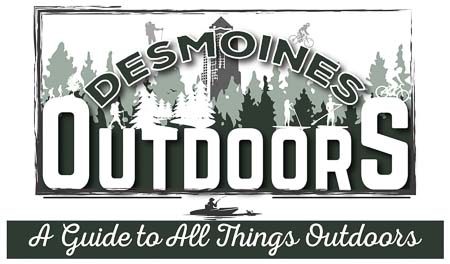This article contains affiliate links. In other words, if you click on an affiliate link and buy a product, this blog may receive compensation at no cost to you. See our full disclosure here.
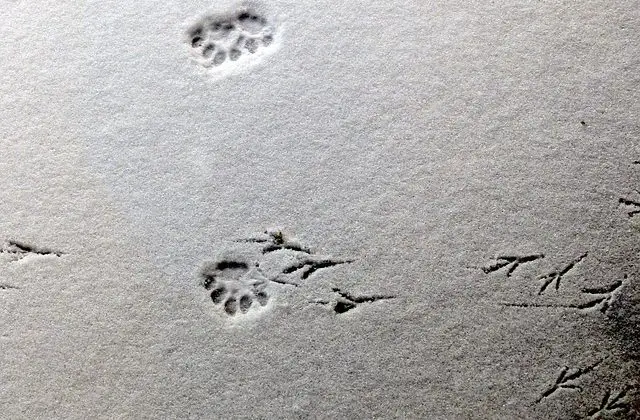
Winter is a beautiful, albeit slower, season, but it’s still full of life! So, why not get outdoors and look for signs of nature’s wonders?! One fun and sometimes challenging thing to do is find and identify animal tracks in the snow. Read on for help identifying common animal tracks you find.
Of course, the critter tracks you find will depend on where you live. And some of the warmer weather animals aren’t out tromping through the snow. So, below we cover the animal tracks you’re most likely to see in the snow.
Table of Contents
Identifying animal tracks in the snow
The good thing about looking for animal tracks in snow is that they’re easier to find and stick around longer.
And the best time to see animal tracks is when there’s a thin top layer of snow. Tracks are harder to identify when the snow is deep.
But even though tracks show an animal passed through, they can get distorted and harder to read in the snow. So, it’s often necessary to look for other clues.
Other clues to consider:
- habitat
- gait patterns
- other animal signs, like scat, feathers, and fur
Habitat
Consider the habitat in your area before you hunt for animal tracks. Read up on animals that are likely to be there in the wintertime and what their tracks look like.
Gait patterns
Some critters step, while others hop or bound through the snow. Since the snow has to be suitable to see detailed prints in the snow, gait patterns are a helpful way to identify tracks.
Other animal signs
Considering the habitat, you know what animal tracks you’re likely to find. So you can look for other signs (besides tracks) that will help you identify them.
Other animal signs to look for:
- scat
- pellets
- fur and feathers
- cracked nuts
- tree bark (stripped bark or rub marks)
- bedding areas in the snow
Rabbit tracks
Rabbits are hoppers and also have a distinct track pattern, so they are easy to identify.
You’ll often spot tracks showing longer feet in front of shorter, smaller ones. This is because rabbits use their larger back feet to propel them forward.
Look for a recurrent pattern of four tracks, often two sets of two – two larger long tracks and two small ones. The cluster of four tracks are close together, with a larger space between each group.
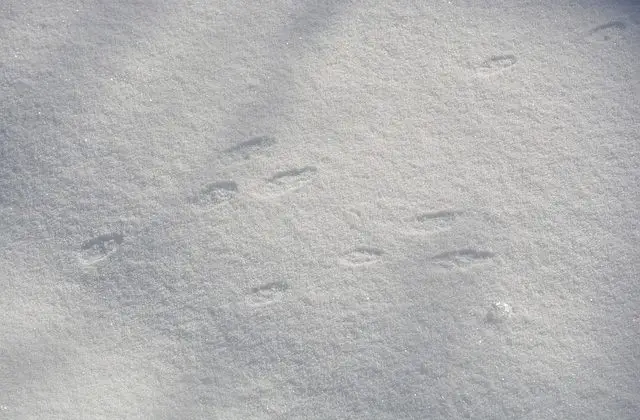
Squirrel tracks
Squirrels have cute little prints that are also easy to identify. They have five long toes, so if the tracks are clear, you can identify them by track alone.
Squirrels are hoppers, so you can also use the gait pattern as a clue. Like rabbits, they leave a cluster of four tracks close together, with a gap between each group.
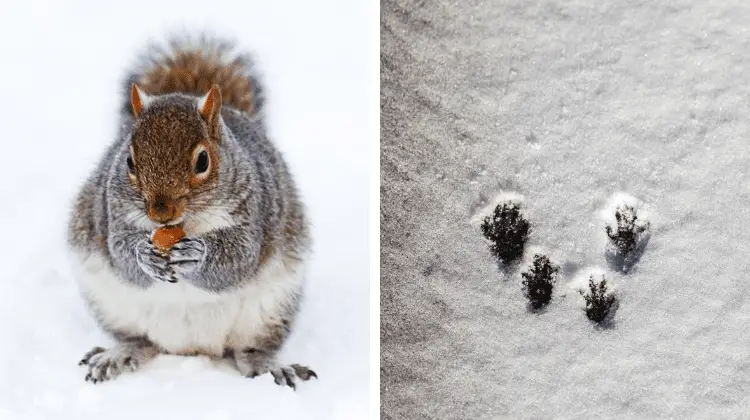
Raccoon tracks
Raccoon prints are unique and easy to identify if you find a distinct set of tracks. Their paws have an arch-shaped pad with five long finger-shaped toes. They almost look like tiny hands with long fingers.
The track pattern is often an alternating, side-by-side set of tracks – one front paw and one back paw side by side.
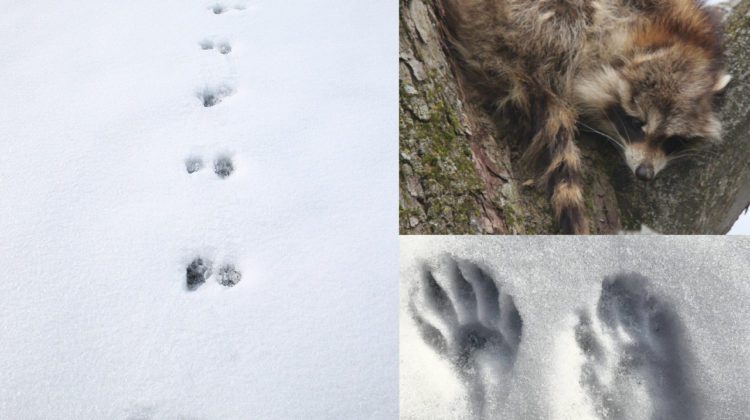
Fox & coyote tracks
Fox and coyote tracks have an arch-shaped pad (with two lobes) and four separate toes. You might see claw prints on the top two toes.
Tracks are longer than they are wide. Fox tracks are smaller than coyotes. And they’re often less distinct since they have more fur on their feet in the winter.
Fox and coyote tracks typically follow a step pattern – one foot in front of the other. And they often travel in a straight line.
It can be tough to distinguish between fox, coyote, and dog prints. To make the distinction, see how they move, their location, and the direction of travel. Domestic dogs often take their time, wander (and sniff!), while wild canids follow a straighter path.
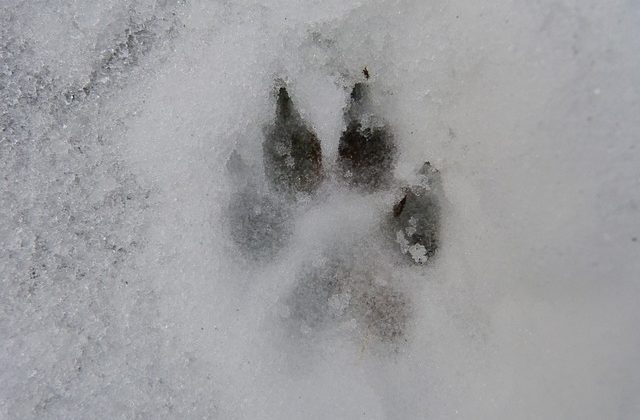
Bobcat (or house cat) tracks
Bobcats (and house cats) have more round tracks with arch-shaped pads, four toes, and no visible claw marks. If the track is clear, you’ll see the foot pads have three lobes (dogs have two lobes).
Bobcat tracks are larger than a house cat – usually about two inches wide and two inches tall. And the front paws are slightly larger than the back paws. But this may be hard to tell from the tracks due to their walking pattern.
Cats’ gait pattern is called “direct register.” This means their back paws step almost right where their front feet did a moment before. (If you look at the image at the top of this article, you can see cat prints in a direct register pattern.)
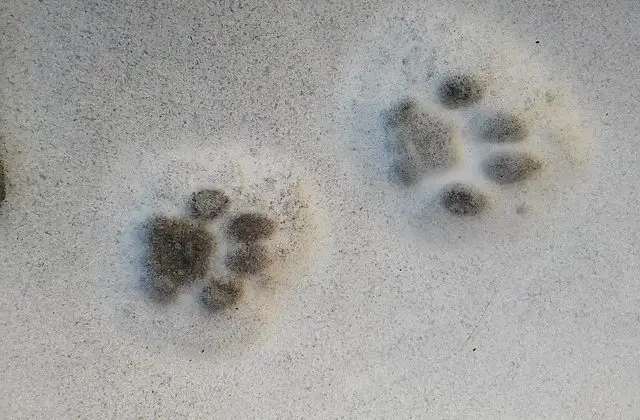
Deer (and Elk & Moose!) tracks
Deer tracks are common and typically pretty easy to find and identify! They have hooves, so their tracks are distinct from other animals.
Deer have two hoofed toes on each foot that narrow at the front to a sharp point. This leaves behind heart-shaped tracks in the snow – the back of the track has two curves that lead to a pointed front. If the deer was running, you might spot two small circles behind the “heart,” which are dew claws.
The size of the tracks varies depending on the size of the deer – they can be one to four inches long.
Deer are alternate steppers when they’re walking, so the front and back feet on each side step simultaneously. But when their pace increases, the gait pattern changes. Then, they use a direct register pattern (like cats!) – their back feet land where the front feet were a moment ago (making it harder to identify the tracks).
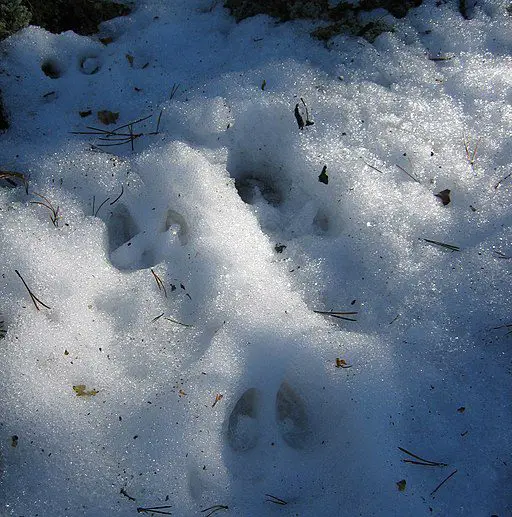
Turkey tracks
Wild turkeys have large, distinct bird tracks, so they’re relatively easy to identify. Plus, turkeys often stick with their flock, so if you find one, there’s likely to be more!
Turkeys have three long toes in the front that meet in the middle, with a small toe in the back (which might not show up on a track). Claws are sometimes visible. Footprints measure anywhere from 3 to 5+ inches in length and width.
You might even be able to tell males from females if you find scat! Male scat is often long and straight and forms the letter J. Female scat is often round, curly, or mounded.
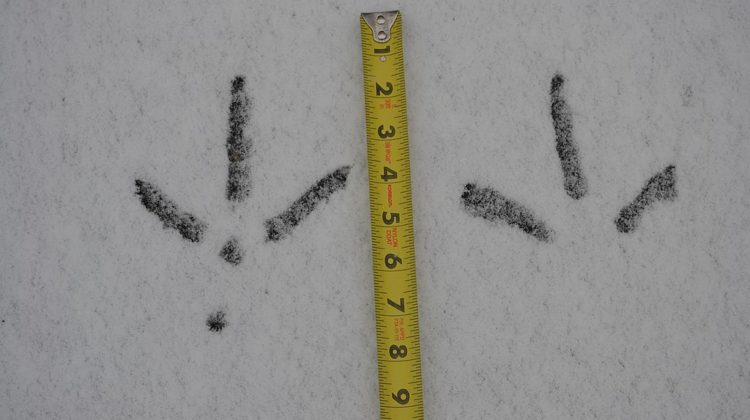
More resources to help identify animal sign
If you want to learn more about identifying animal tracks in snow – or about animal sign in general – below are some valuable resources to check out.
• iTrack Wildlife App
• Seek by iNaturalist App
• Mammal Tracks & Sign: A Guide to North American Species
• Tracking and the Art of Seeing: How to Read Animal Tracks and Sign
• Tracks and Trailcraft
• Tracks, Scats, and Signs (for kids)
• The Secret Signs of Nature: How to Uncover Hidden Clues in the Sky, Water, Plants, Animals and Weather (for kids)
• Bird Tracks and Sign: A Guide to North American Species
Next:
- Woodworking for Wildlife: Start a Fun, Nature-Friendly Project Today
- Iowa Winter Birds: What to look for, where to look, and more!
- Winter Hiking Gear: Best winter hiking boots, pants & other gear
